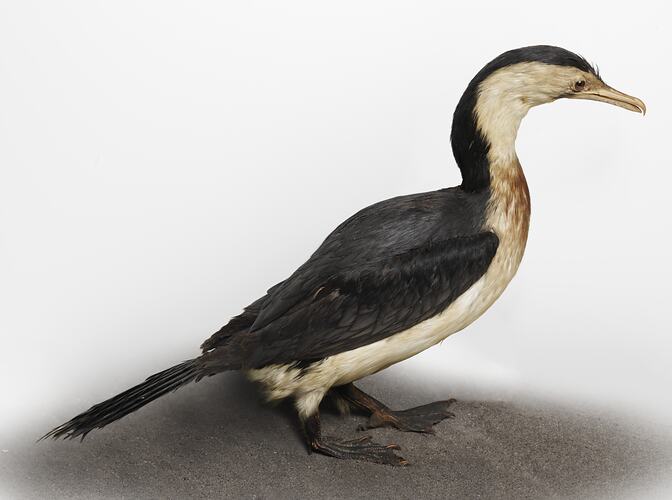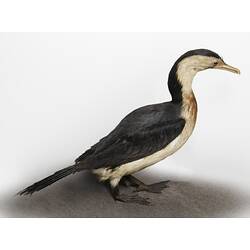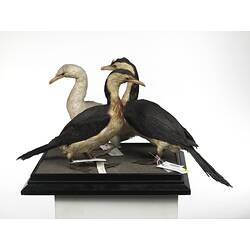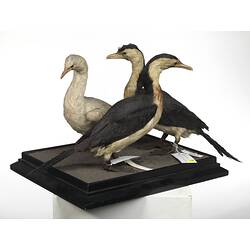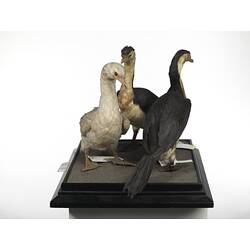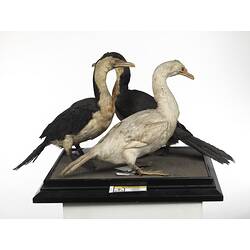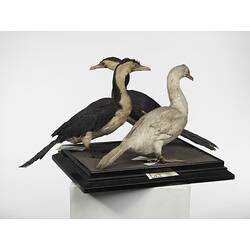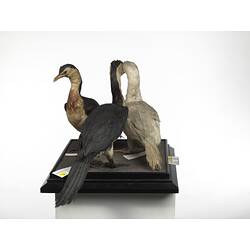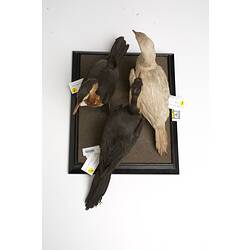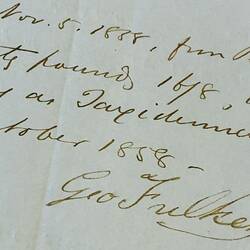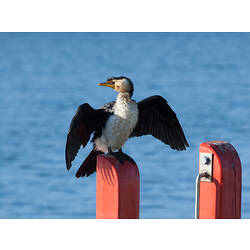Summary
This bird specimen was collected during William Blandowski's expedition to the junction of the Murray and Darling Rivers (December 1856 - December 1857). It is from a set of specimens collected in the Gunbower area from 15-31 January 1857. Its original tag '212' is still intact and the expedition register records it as a 'White bellied cormorant' from 'swamps and lagoons in the neighbourhood of Mt Hope and the Murray River' (meaning from Gunbower and Kow Swamp area).
There are two illustrations of this species (at Museum fur Naturkunde, Berlin) from the expedition. Blandowski illustrated the bird in the field as 'Phalacrocorax melanoleucos, Pied Cormorant, Little Shag' (B VIII/267), and on the drawing he also recorded the Koorie name of 'Poorl - Loddon', referring to the Aboriginal people in either the Loddon or Gunbower areas. Back in Germany in 1861, Blandowski's artist Gustav Mutzel completed a watercolour painting of the species (see B VIII/140) Figure 620 on Plate 58 of his Australian seabirds for the Birds of Australia series. Blandowski assigned the number '620' to this bird species, as a reference to its position on the list in the introduction in volume one of John Gould's 'Birds of Australia' (seven volumes, 1840-1848). Gould had listed the species as Phalacrocorax melanoleucus and also provided an illustration in volume 7, plate 70.
This specimen was prepared as a dry skin in the field, and then consigned back to the Museum in Melbourne. The specimen was on a list of birds that were originally 'stuffed and mounted' for display in the museum in February 1858, and the work has been attributed to the museum taxidermist at the time, George Fulker.
Specimen Details
-
Collection Names
-
Taxon Name
-
Preferred Common name
Little Pied Cormorant
-
Stage Or Age
Adult
-
Specimen Nature
Nature: Mount, Form: Dry
-
Collected By
William Blandowski
-
Category
-
Scientific Group
-
Discipline
-
Collecting Areas
-
Type of Item
Taxonomy
-
Kingdom
-
Phylum
-
Subphylum
-
Class
-
Order
-
Family
-
Genus
-
Species Name
melanoleucos
-
Subspecies
melanoleucos
Geospatial Information
-
Country
-
State
-
Precise Location
Murray and Darling Rivers junction
-
Latitude
-34.1
-
Longitude
141.92
-
Geodetic Datum
WGS84
-
Georeference Protocol
Estimated
